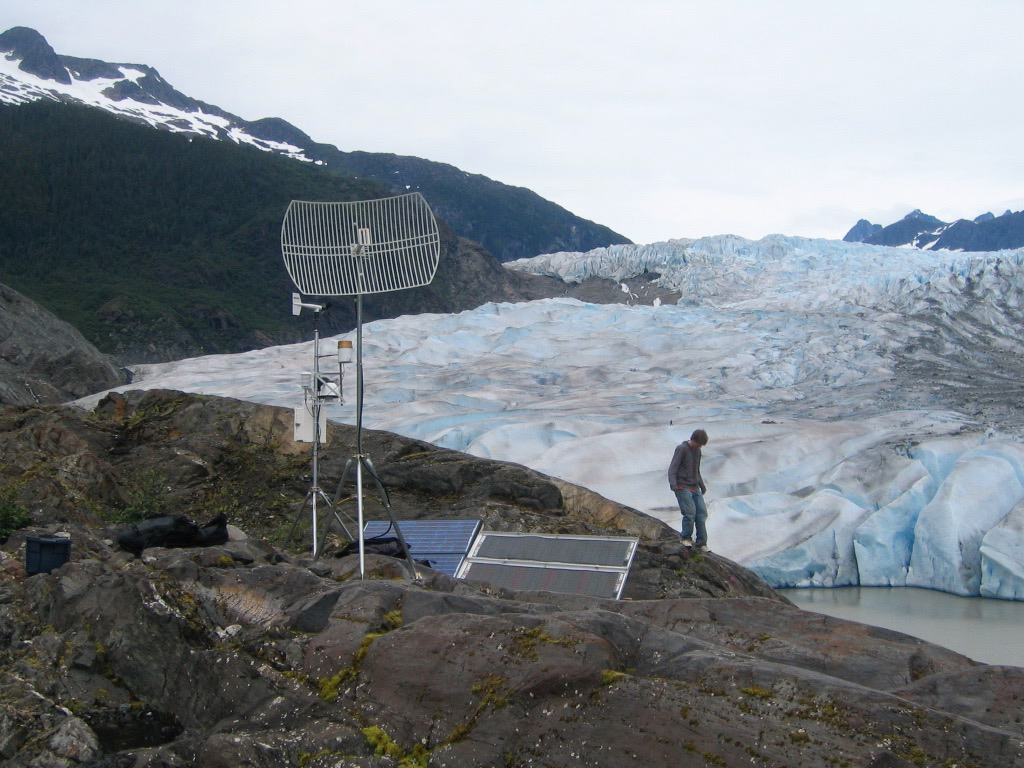SEAMONSTER: A Sensor Web Testbed Helps Bring a Shifting Glacier into Focus

Large ponds of liquid water that form on the top of a glacier, supraglacial lakes can form slowly and drain catastrophically, flooding the watershed below. These two supraglacial lakes formed on Lemon Creek Glacier in 2009. (Credit: Matt Heavner)
Lemon Creek Glacier, located at the southernmost tip of Alaska’s Juneau Icefield, is one of the most studied glaciers in the world. A reference glacier for the World Glacier Monitoring Service, Lemon Creek has engaged researchers from institutions around the world since the 1940s, hosting sophisticated meteorologic and hydrologic instrumentation along its 5 km extent.
In 2005, an ESTO project called SEAMONSTER began networking these instruments together to demonstrate emerging sensor web technologies and advance science observations at the site. As with several other sensor web projects selected under the Advanced Information Systems Technology (AIST) program in 2005, the SEAMONSTER team sought ways to network and control heterogeneous sensors in a ‘web’ that could provide a more complete view of real-time situations.
This networked sensor web helped to orchestrate observations, allowing autonomous monitoring of data, triggering of measurements in response to detected events – such as during flooding from the sudden outflow of glacial lakes – and sensor power-management strategies.
Led by Matt Heavner at the University of Alaska Southeast, the project incorporated several dozen instruments – metrology stations, seismic stations, pressure transducers, water chemistry sensors, water temperature/pH sensors, and controllable cameras – on the glacier itself as well as along the approximately 15 km Lemon Creek watershed emptying into the Pacific Ocean. In all, the network monitored over 25 separate physical parameters including: glacier dynamics and mass balance, watershed hydrology, coastal marine ecology, and human impact/hazards indicators.

A team member checks instrumentation on Lemon Creek Glacier (Credit: Matt Heavner)
By implementing an adaptive, autonomous network around these sensors, the SEAMONSTER team was also able to greatly extend research possibilities at the site. Several contemporary AIST projects used the facility to test related sensor web concepts, including a self-adapting sensor network developed at the Georgia Institute of Technology that utilized autonomous SnoMotes, toy-sized snowmobiles with built in sensors.
Data from the project was released for nearly a decade using Open Geospatial Consortium (OGC) standards. The team also implemented a browser exhibit at the Mendenhall Glacier Visitor Center, where more than 500,000+ annual visitors could interactively examine the Lemon Creek data.